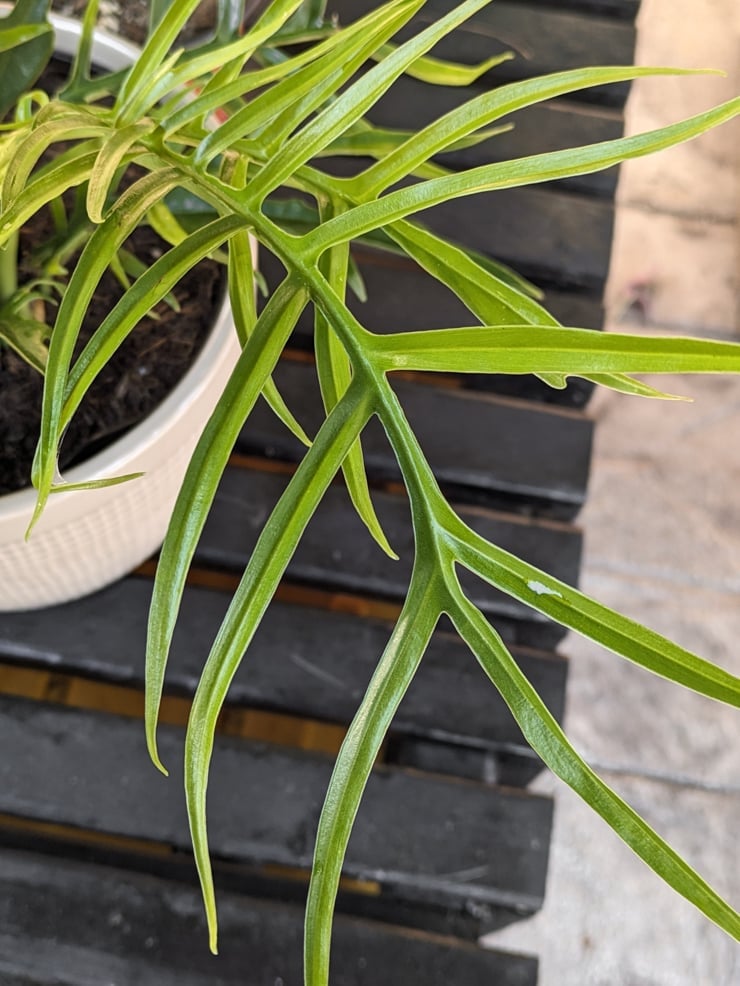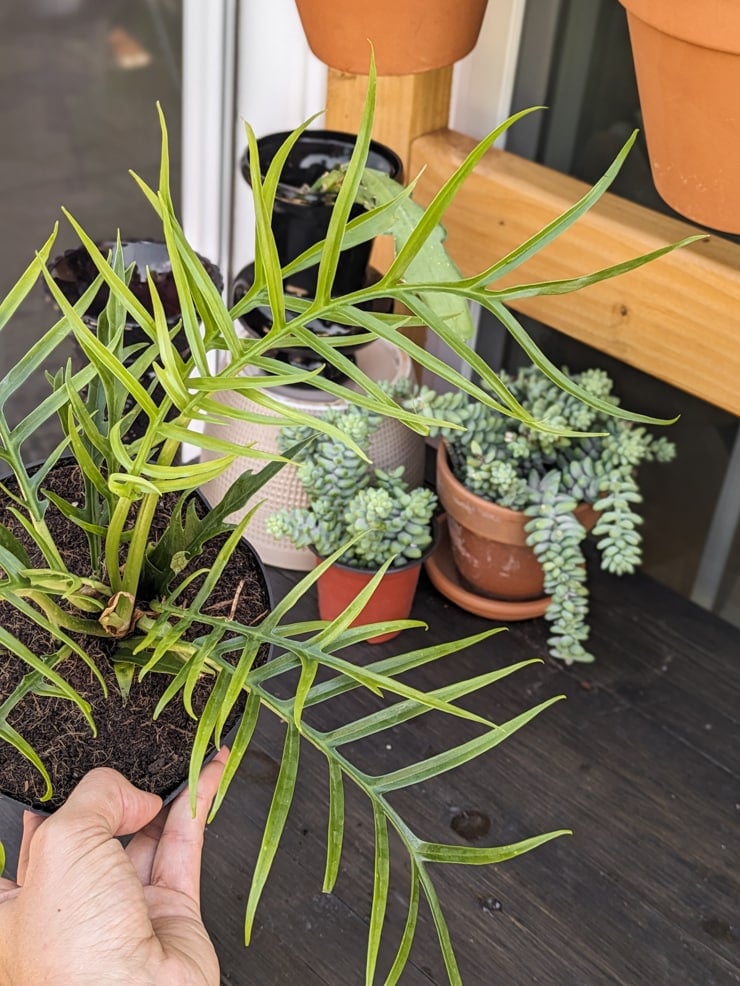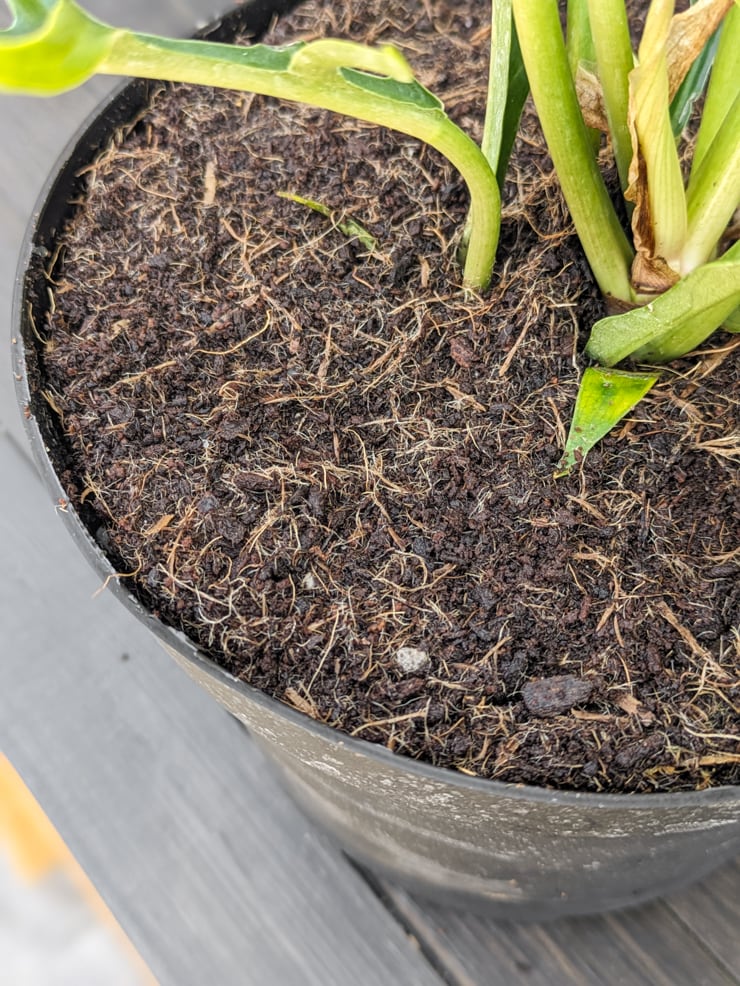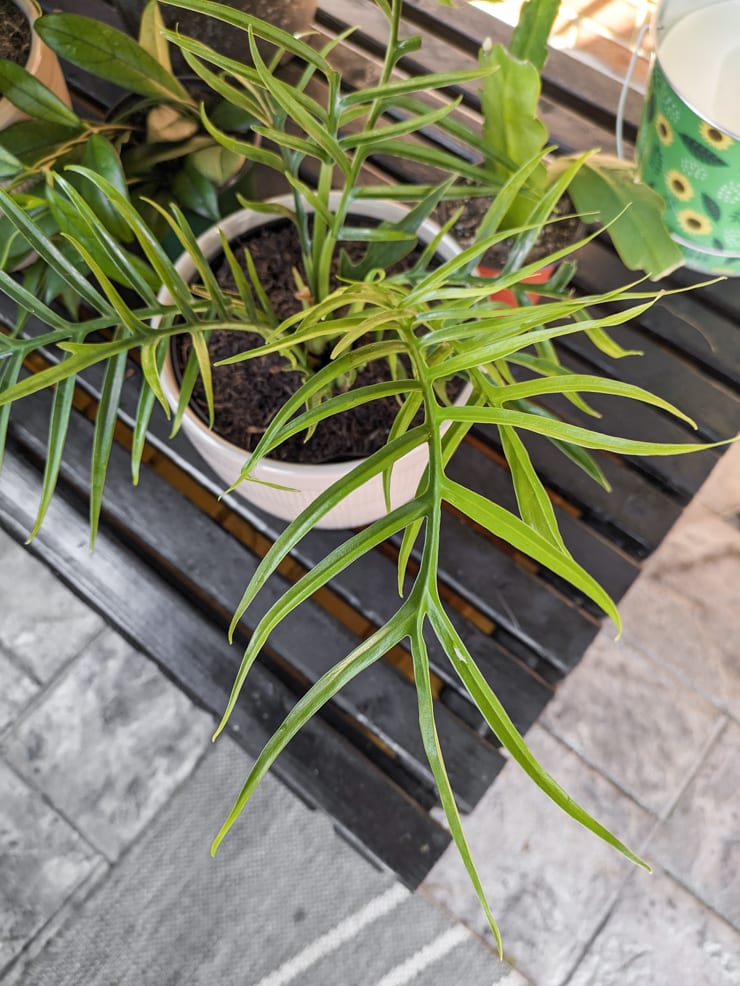Looking for philodendron tortum care tips? Philodendon tortum, otherwise known as the fernleaf philodendron, is a relatively hardy variety with delicate-looking leaves. Learn more about this plant with my post!
All about philodendron tortum, aka the fern leaf philodendron!
I’ll be honest—I hadn’t heard of the philodendron tortum until relatively recently. Until I hit “order” on one, that is. I saw it pop up online and thought, “huh, that looks cool.” And my service to you? I bought it, learned about caring for it, and am now going to write about it ????
There are a ton of different varieties of philodendron. So unless you’re a big philodendron fan or a super serious houseplant collector, it’s possible that you haven’t heard of tortum, either. Or you might have heard it referred to by its common name “fern-leaf philodendron.”

Can you tell me about the philodendron tortum?
The philodendron tortum grows wild in some tropical regions of South America. It is often referred to as the fern-leaf philodendron because its green leaves have deep lobes that create delicate-looking, fern-like leaves.
It reminds me a bit of the philodendron selloum/bipinnatifidum, which is sometimes referred to as the “lacy tree philodendron.” Except the leaves on the philodendron tortum aren’t nearly as big and beefy as the selloum/bipinnatifidum’s leaves.

Is philodendron tortum rare?
Philodendron tortum is somewhat rare; it is a newer plant on the houseplant collecting scene, so that brings with it a bit of hype. But the grower Costa Farms—one of the biggest growers in the United States, began growing it recently.
And that means they are producing a lot of them. I’ve yet to see them in a store, but they have them for sale on their website as of writing this for $50 including shipping.
The plants are a little more expensive on their website. But you also have to account for the cost of shipping—and they package the plants very well. I also heard directly from a contact at Costa Farms that their direct shipping plants are held to a higher standard than the ones they sell in stores like Home Depot and Lowes.
So all of that is to say the prices are not outrageous on these. You may still find them for higher prices, though, until they become more common in stores.

How do you care for the philodendron tortum?
Caring for philodendron tortum is about as challenging as caring for other philodendrons. And philodendrons are, in general, pretty easy plants.
So if you’re wondering if tortum is a toughie, I wouldn’t worry. We’ll walk through some of the common care topics you’ll need to know, starting with light.
Like this? Check out my post on Pink Princess Philodendron Care, my Philodendron Mayoi Care guide, and my tips on Philodendron Jungle Boogie Care!

How much light does a philodendron tortum need?
As with other plants grown in tropical areas, philodendron tortum generally preferred loads of bright, indirect light or bright shade. That’s because it grows up trees in the wild, and those trees generally have dense canopies that shield the plants on the lower level from direct sun.
If you have your tortum indoors, shoot for a window with lots of natural light. An east- or west-facing window will generally get the best light in your home. If you don’t have a great spot for it, you can supplement its lighting needs with grow lights.
Outdoors—and I love bringing philodendrons outdoors for the summer—you can put the plant under a tree, in a pot in a shade garden, or under a covered deck or patio. My gazebo on my patio is perfect because it is shaded but gets loads of brightness reflecting up from the patio.
If your plant gets too much direct light—either from the sun or a grow light that is too strong/too close to the plant—it will burn the foliage. You can’t reverse these burns, so make sure you take care to increase light levels slowly.

How much water does this plant need?
You can safely water this plant once about the top half to top two-thirds of soil has dried out. I tend to err on the side of slightly drier soil with my philodendrons.
When you water the plant, do so thoroughly in a sink or shower. At least that’s what I like to do. I love deep watering my plants by completely drenching the soil and letting all of the excess water flow from the pot’s drainage holes.
This is also a great time to rinse off the leaves. The foliage on this one is a bit delicate, and that means wiping the leaves by hand could be challenging.
Do not overwater your plant. If you give it water too often or if you’ve planted your tortum in soil that retains too much water, it can prevent oxygen from flowing to the plant’s roots. This will lead to root rot and kill the plant.
How often you need to water your plants depends heavily on other factors like the amount of light it is getting, how dense the soil is, how warm temperatures are, and more. But generally I water my indoor philodendrons weekly in the spring and summer, every 10-14 days in the late fall and winter.

What is the best soil?
And soil is, of course, a critical component of the watering routine. Use something chunky and well-draining. Anything labeled as a “houseplant” or “indoor plant” soil will work just fine. I love this brand.
These mixes usually come with things like perlite, coco coir or peat moss (the latter I try to avoid for sustainability issues), or orchid bark mixed in. These ingredients help to lighten up soil and facilitate drainage, allowing lightweight moisture retention.
Always check soil moisture before watering—it’s the best way to determine if it’s time to water! Stick that finger in to see or invest in a moisture meter. (I used my finger.)

Temperature & humidity needs
I’ve mentioned the rainforest and tropical environments a few times already. So that should probably tell you that the philodendron tortum does best in hot, humid conditions.
It will do well in a variety of normal household temperatures, though growth will likely slow down in the winter if you keep your house cooler. Shoot for the 70s, 80s, or even low 90s Fahrenheit for the best growth.
It is not cold or frost hardy at all. So if you have it outdoors on a patio for the summer, bring it inside once temperatures begin dropping down into the 50s at night.
Philodendron tortum will be happiest in humidity levels above 50%, which is higher than most standard home humidity levels. I recommend adding a humidifier to your plant room or growing this one in something like a glass greenhouse cabinet.
Misting doesn’t really boost humidity levels for longer than a few seconds. But it is fun, so I’m not going to tell you not to do it ????

Like this? Check out my post on 20 Philodendron Types With Photos, my tips for Philodendron Burle Marx Care, and my Philodendron Brasil Care & Propagation guide!
Is philodendron tortum a climber or crawler?
Philodendron tortum is a climbing plant, often growing up trees, branches, and the like in its natural habitat. You’ll probably get your plant when it is small and has no need to climb just yet.
But as the plant grows, you should consider giving it something to climb. A moss pole would be a great choice—or some sort of branch would be cool, too.
Tortum’s leaves can grow to be over a foot long, and it will probably need to climb something to help it mature. So tie it up gently to a moss pole and spritz the pole with water to keep it moist.
Is philodendron tortum fast growing?
I would say that the philodendorn tortum is about average as far as growth speed goes. I have not noticed it to be particularly fast or slow.
How often should I repot my plant?
I personally do not repot my plants until they really need it. I don’t want to disturb the root system if I don’t have to. I wait until the roots are growing out of the pot’s drainage holes or they are circling the bottom of the pot a ton.
You can usually tell a pot is totally rootbound because you can pick it up out of the pot and not make a big mess. But when I pot up, I do so only about an inch or so for philodendrons. They don’t want to be drowning in soil.

How do you propagate a philodendron tortum?
Philodendrons in general are pretty easy to propagate. I have actually not tried to propagate my tortum yet, but the process is the same as many other philos I have propagated.
First take a cutting that has at least one growth point on it in addition to the leaf. You may choose to take a cutting with 2-3 leaves and gently remove the bottom-most leaf to expose a growth point.
Honestly, I would just pop it in water, monitor the root development, and then transfer to soil after a few weeks. Keep the soil evenly moist while the cutting’s water roots are adapting to soil.
Is philodendron tortum toxic?
Yes, all phiodendrons contain calcium oxalate crystals. They should not be ingested by pets or humans. Ingesting any part of the plant can lead to oral irritation; pain and swelling of mouth, tongue and lips; excessive drooling; vomiting; and difficulty swallowing, according to the ASPCA.
So keep philodendrons up and away from any curious kids or pets. Another reason a glass grow cabinet might be a good solution for this plant!
Pin my care guide!



Hi there, just became alert to your blog through Google, and found that
it is truly informative. I’m going to watch out for brussels.
I’ll appreciate if you continue this in future.
Many people will be benefited from your writing. Cheers!
Lista escape roomów